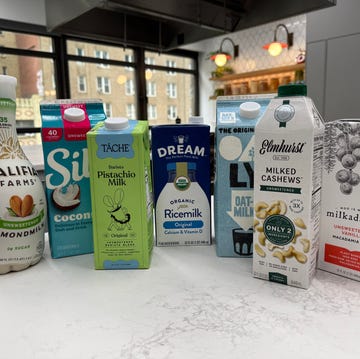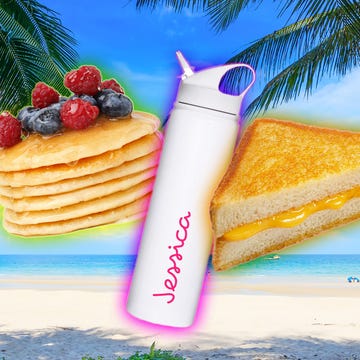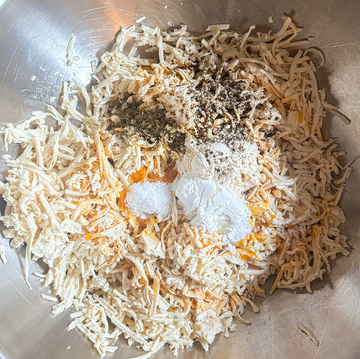Salts: From the Ordinary to the Extraordinary

Table Salt

Table salt is probably the variety you're most familiar with and use daily. Because it is granulated and so fine, it's great for applications that require specific measurements, like baking. Many table salts are iodized, meaning that they're supplemented with iodine, an essential micronutrient. (Iodine deficiency can cause serious health problems, like thyroid issues, and is the most preventable cause of brain damage in the world.) Popular Morton table salt is available in both plain and iodized varieties.
Kosher Salt
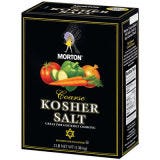
There are many ways to make salt, but Morton, a company that has been in business in some form in the United States since the mid-1800s, sticks to the tried-and-true methods that have served them well for over a century. Morton kosher and table salts are made using a vacuum evaporation method — salty brine from underground deposits is pumped up, then boiled until the water begins to evaporate and distinguishable salt crystals begin to form. Kosher salt is a coarse grain salt, so although it dissolves completely when added to soups, stews, or brines, it also works well in spice rubs or in other applications that require a bit of texture, like rimming a cocktail glass. An excellent everyday salt, kosher salt is a go-to for many cooks for an array of basic uses.
Fleur de Sel
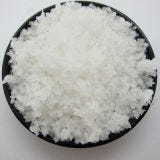
The phrase "fleur de sel" literally translates from the French to "flower of salt." This type of salt was originally hand-harvested from ponds near France's Atlantic coast using a very delicate process — it can only be collected during the right weather conditions, when it is reasonably warm and windless, because violent movement will cause the "flowers," or the perfectly sized salt crystals, to sink to the bottom of the ponds and be lost. Traditionally, these same ponds were the source of sel gris, or gray salt, which is typically much coarser, with very large crystals. It's now possible to find products in a similar style as fleur de sel from various places around the globe, including Portugal, which is the home of the salt pictured. Spice Ace, which stocks this Portuguese variety, also stocks fleur de sels from several areas in France, an organic option, and dozens of other salts from around the world.
Sea Salt
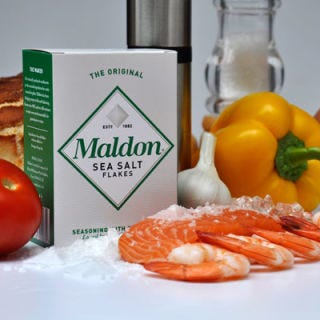
Sea salt comes in many colors, grains, and forms, but when many people think of sea salt, they often think of a classic, white, flaky sea salt like Maldon. Still a family-run enterprise, Maldon is a British company that has been making sea salt since the 1880s. Evaporated from natural seawater off the Essex county coast in England, this sea salt's clean flavor and soft texture is ideal for use in a variety of foods. Many coarser sea salts like Maldon work well as finishing salts because of their distinctive textures, which can add a delightfully unexpected crunch to everything from salads to desserts.
Deep Water Salt
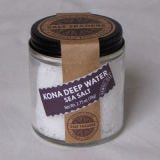
Sourced from the waters near the pristine Hawaiian islands, this salt is made using a special process unlike any other. Not just evaporated from the surface, Kona Deep Water Salt is gathered from areas many feet below the ocean's shallows, then pumped directly to surface-level "greenhouses" so it is never exposed to the elements or anything that might contaminate it. The result is a simply pure, almost blindingly white salt, which also happens to be lower in sodium than many other varieties.
Murray River Pink Flake Salt
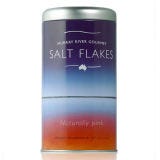
Murray River Salt is a naturally pink, flaky salt that comes out of Australia. It's produced from a concentrated brine that comes from the Mourquong Salt Mitigation Basin in New South Wales. This salt's warm, rosy-pink hue is entirely natural thanks to other minerals found in the brine from which it is extracted. With no artificial additives or preservatives, plus extra healthy elements like calcium and magnesium, this lovely salt not only looks good on the table, it adds a little of that good stuff to whatever you choose to sprinkle it on. It's especially light and soft in texture, so it will quickly dissolve into soups and sauces when used during cooking, but it also makes a nice finishing salt. Shower a small amount over grilled vegetables, flaky fish, or other delicately flavored foods just before digging in.
Frost Salt
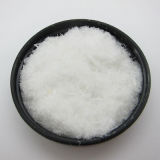
Though it looks more like frost (or cotton candy!), this is, in fact, a salt. It originates in the Egyptian desert, and the unique environment in that part of the world creates a salt composed of thin, delicate strands rather than coarse crystals. It has a noticeably softer texture than common table or sea salt. To show off its unique qualities, it is best used as a finishing salt — as it is so dry, it can be used to add a final flourish to hot dishes, like stews and braises, without immediately melting away.
Smoked Salts
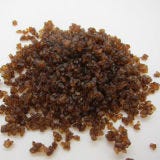
Produced using traditional techniques mastered many centuries ago, Danish Viking Smoked Sea Salt is imported from Denmark. There are many smoked salts now available, with flavors imparted from a variety of woods, but this one is set apart from the rest because of the numerous woods — juniper, cherry, elm, and oak — used in the smoking process. The resulting product is imparted with an intensely smoky, bonfire-like flavor that is usually hard to add to foods without an actual fire. Try tossing it with roasted or steamed vegetables, with a drizzle of olive oil and fresh lemon, or on top of starchy foods, like baked potatoes, for a big burst of out-of-the-ordinary flavor.
Booze-Infused Salts
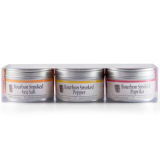
Bourbon Smoked Sea Salt is also smoked, as the name indicates, but gets an extra hit of fragrance and flavor from authentic, aged Kentucky bourbon. There are numerous other salts now on the market with boozy infusions, like cabernet and chardonnay wines, but the added bourbon flavor in this salt will go especially well with any foods that have already have a somewhat smoky or charred flavor to them, like grilled steaks and vegetables.
Spicy Salt
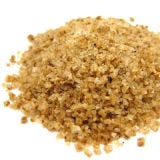
Plain white sea salt from Mexico is the base of this spicy blend. Nothing but real ghost chile peppers are added, giving this salt a serious heat. You may only need a dash or two per dish, but if you like your food with a little kick, this salt (or any others with an infusion of spice) is an excellent and unexpected finishing touch. Try mixing it into your favorite batter for frying chicken or green tomatoes, or sprinkling a little on top of a gooey, cheese-filled fried snack, like arancini.
Kala Namak Volcanic Black Salt
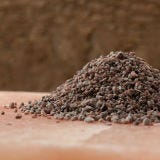
Produced in Darjeeling, India, Kala Namak is an unrefined mineral salt that gets its distinctive color and mineral content from the volcanic rock from which it is mined. Because it contains traces of magnesium and iron, this salt and others like it actually give a small health boost to the dishes you choose to use them in. This type of salt has a distinct sulfuric flavor, so it's typically used as a finishing salt and in Indian snack foods and condiments, like chutneys, raitas, and chaats (fruit glazes). It is also traditionally used in Ayurvedic medicine. If you want to mellow out that sulfuric flavor, it's better to cook it into a dish. Kala Namak Volcanic Black Salt is sold in both fine and coarse grades.
Bamboo Leaf Salt
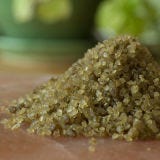
Like Maldon, this Bamboo Leaf Salt is a sea salt, and its production begins when it is evaporated from pure sea water. It is taken from the seas near the Hawaiian island of Molokai, and the bamboo leaf extract is added after the typical production process has been followed. The bamboo leaf adds a lovely green color, as well as subtle flavor and fragrance, to this salt, and also gives it some health-boosting components, like amino acids, antioxidants, and vitamins. Cook it right into soups, stir-fries, and pork and poultry dishes to complement its unique flavor profile.
Peruvian Pink Salt
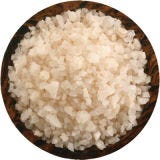
Harvested in Peru at the foothills of the Andes mountains, this solar-evaporated salt's coarse, blush pink crystals are high in moisture content, which gives them a softer texture than some other salts of this grade. It has an intensely strong salt flavor, so it's best when fully dissolved and evenly distributed throughout a cooked dish, rather than as a finishing salt.
Himalayan Pink Salt
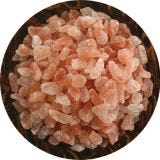
Though there are many pink salts out there on the market today, not all are exactly the same. Available in both coarse (pictured) and fine grinds, this variety from SaltWorks is an extremely dense salt mined from ancient sea beds in the Himalayan mountain region. Because of its density and intensely salty flavor, it is recommended that this salt be crushed down to your preferred size by hand (or put into a grinder) before using. The finer grind will dissolve evenly into soups, stews, and sauces, while the coarser grind can be crushed manually and used as a finishing salt. Try a dash of it on top of an extremely sweet dessert, like a caramel or sticky pudding, to balance out the sugar.
Persian Blue Diamond Salt
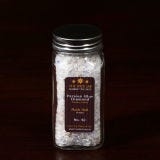
The vivid blue flecks found in this rock salt give it a distinctive appearance. This rare salt comes from mines in a province in northern Persia, known more commonly today as the country of Iran. At first, the salty flavor is intense, but as it lingers on the tongue, a hint of sweetness becomes apparent. Because of its unique and beautiful color, this is probably best used as a finishing salt, sprinkled on top of dishes just before serving to enhance both flavor and appearance — try it with a subtly sweet seafood dish, like steamed mussels or sautéed shrimp over grits.
Japanese Soy-Infused Sea Salt
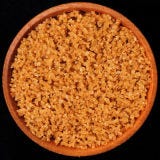
With a heady scent and lovely golden brown color, this soy sauce-infused salt makes a delicious addition to any rich or fatty dishes. As you might expect, it has an intensely salty flavor, so a little goes a long way, but the almost caramel-like notes and umami-filled flavor would be really luscious, savory additions to all sorts of dishes. Try sprinkling it on a meal at the end of cooking for the highest impact. Think about using it on anything with a bit of fat in it — like grilled meats and beef dishes — or use a dash on top of heartier vegetables, like eggplant or mushrooms.
Red Alaea Hawaiian Sea Salt
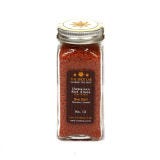
This sea salt, sourced from the oceans around the Hawaiian islands, gets its gorgeous terra cotta color from purified clay found between layers of volcanic rock. According to the folks at The Spice Lab, red alaea clay and the salt made with it are full of trace minerals and other micronutrients that give it a distinct flavor and certain health benefits. Red Alaea Hawaiian Sea Salt is the traditional seasoning used on many beloved Hawaiian dishes, including kalua pig and poke.
Salts Infused with Local Flavor
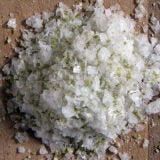
Salt Traders sells a wide variety of specialty salts, but some of the company's most interesting offerings are also those that feature locally-sourced ingredients from places many of us will never have the chance to visit. Sitka Spruce Salt Flakes are flavored with pure Alaskan spruce tips, giving them an incredibly unique, herbaceous, and piney taste. Use it to flavor or rim a glass for a wintery cocktail, with roasted meats like lamb, or even in a buttery baked good, like shortbread.
Fruity Salts
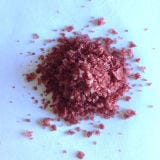
Fruit infusions add unexpected sweetness and delicious contrast to a pure, coarse salt. This example, from Salt Traders, is flavored with wild Alaskan blueberries, which also give the salt its vibrant bluish-purple hue. Though this is a great addition to a whole number of dishes, it's an especially interesting and tasty topping for desserts — try a sprinkle on top of vanilla ice cream, or as an accent to finish off a batch of homemade caramels.
Health-Boosting Salts
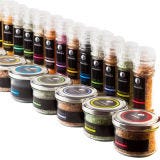
All the buzz about salt is that you should enjoy it in limited quantities, but some producers are trying to add a different perspective to the salt conversation. Startup NakedSea, in a partnership with natural foods purveyor AbesMarket.com, plans to sell a variety of flavored and infused salts, all originally sourced from the Dead Sea. In years past, Dead Sea salt has typically been used in beauty products, not as a food. But the location of the salt's source and how it is extracted makes it a healthier salt source for foods, according to NakedSea. It contains small amounts of approximately 21 good-for-you minerals, like magnesium and potassium (in other words, it's not just sodium chloride), and will be sold in about 20 different flavors.


45 Best Packable Beach Food Recipes

8 Things You Should NEVER Keep On Your Kitchen Counter

I Tried Ninja's Outdoor Pizza Oven
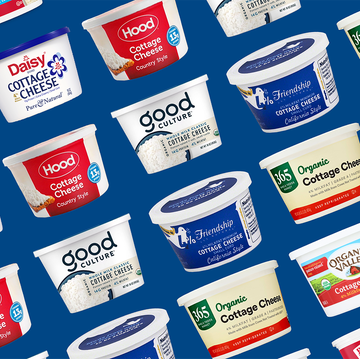
I Blind-Tasted 7 Cottage Cheese Brands & The Winner Is Better Than Good Culture
